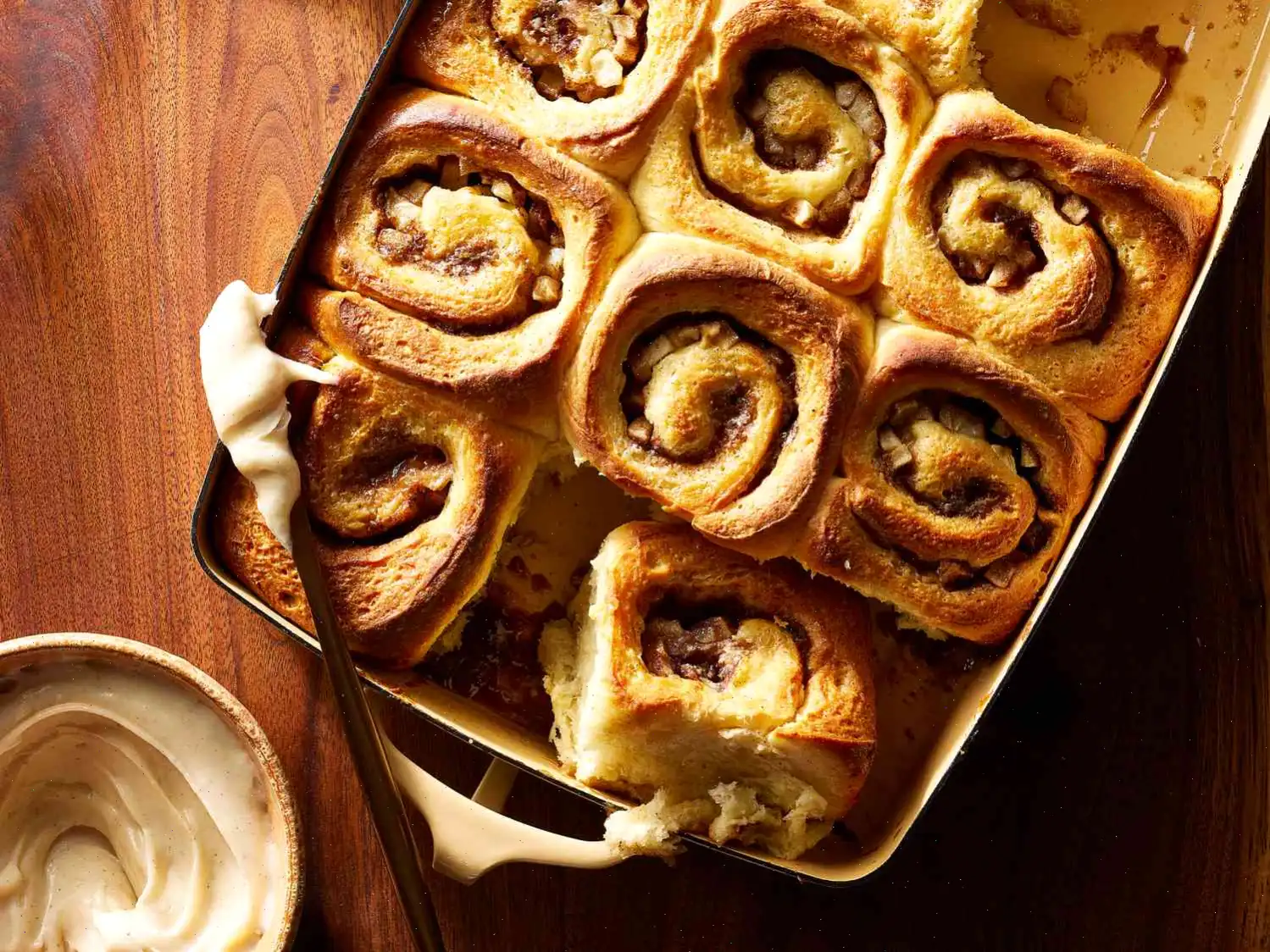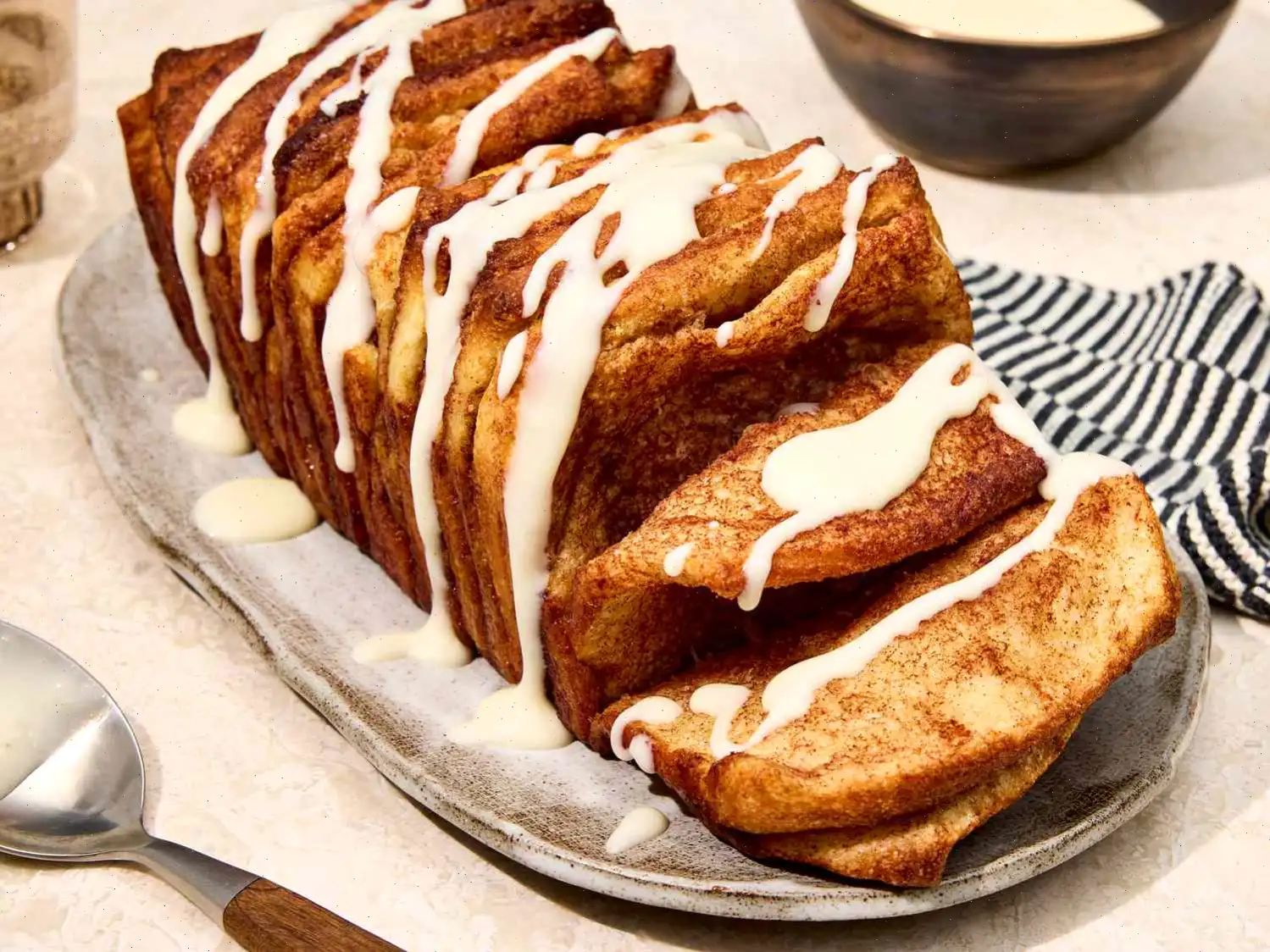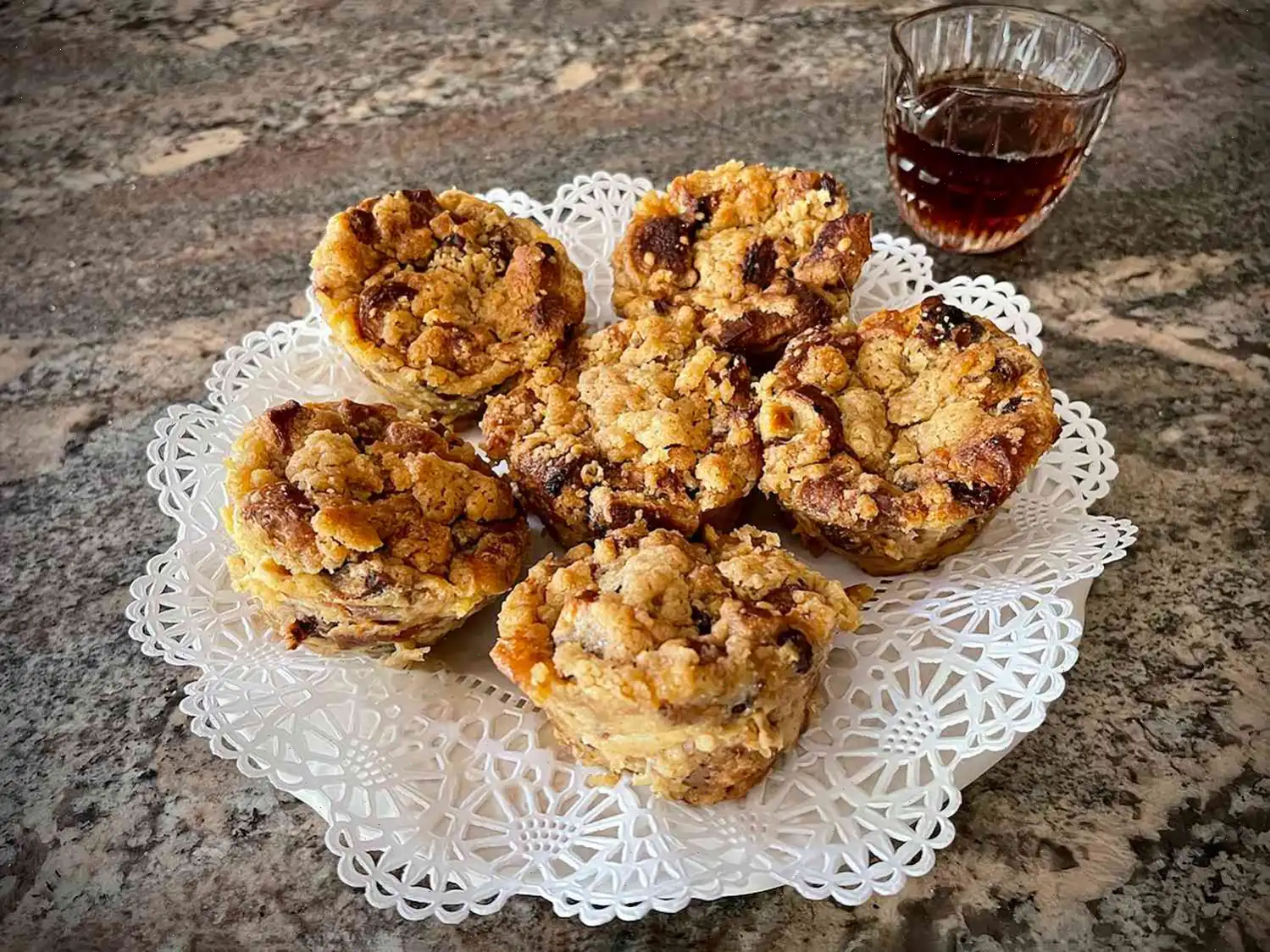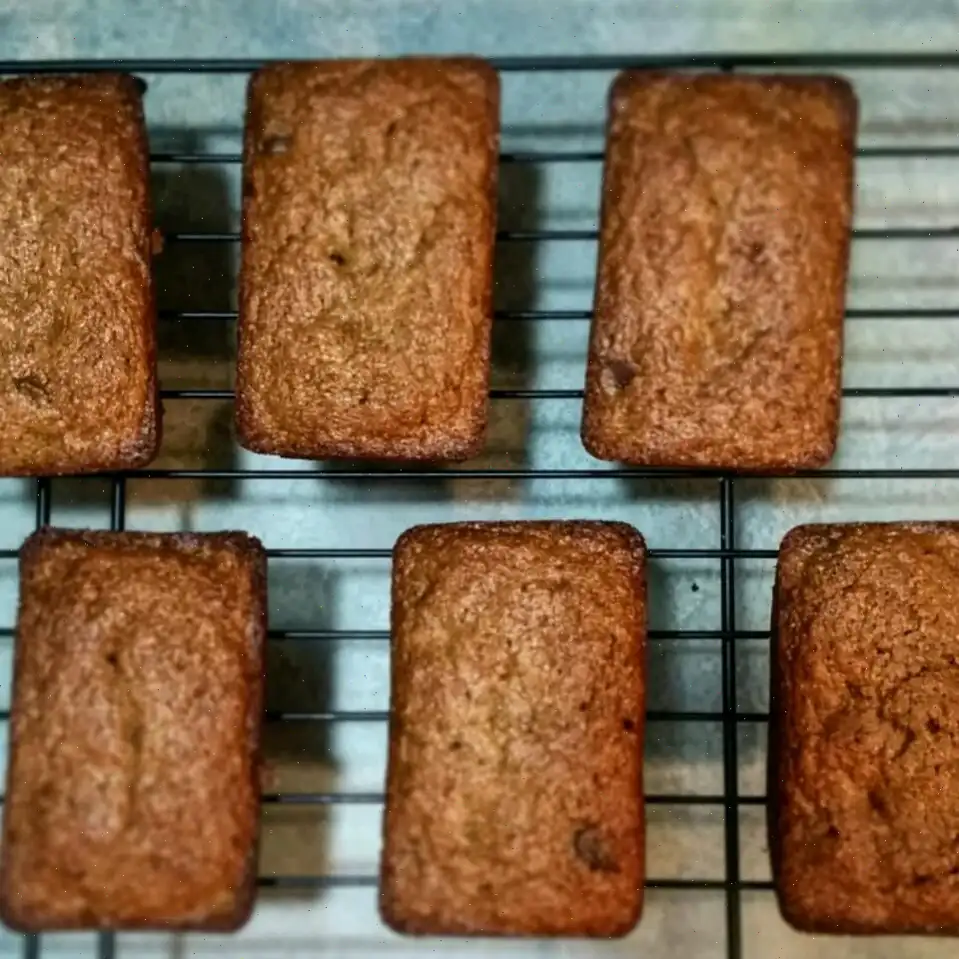
Sweet Potato Sage Biscuits Recipe
Original recipe (1X) yields 18 servings
Ingredients:
- 1 (8 ounce) sweet potato
- 2 1/4 cups all-purpose flour
- 2 tablespoons minced fresh sage
- 1 tablespoon baking powder
- 1 teaspoon baking soda
- 1 teaspoon fine sea salt
- 1 stick (8 tablespoons) very cold butter
- 1/2 cup full-fat Greek-style yogurt
- 1/4 cup cold whole milk
- 1/4 cup honey
- 2 tablespoons melted butter
- 1/2 teaspoon flaky sea salt
Directions:
Step 1: Preheat your oven to 400F (200C). Line a large baking sheet with parchment paper.
Step 2: Pierce the sweet potato several times with a fork. Place it on a microwave-safe plate and microwave on High for about 5 minutes, or until tender when pierced with a fork.
Step 3: Once the sweet potato is cool enough to handle, scoop out the flesh and mash it. Measure 1 cup of mashed sweet potato and reserve the rest for another use.
Step 4: In a large bowl, whisk together the flour, sage, baking powder, baking soda, and fine sea salt.
Step 5: Coat the whole stick of butter in the flour mixture. Grate the butter on the large holes of a box grater directly into the bowl. (If the butter starts to melt, recoat it in flour and continue grating.) Use your fingers to toss the grated butter in the flour mixture until all pieces are separated and coated. The mixture should resemble coarse crumbs.
Step 6: In a separate bowl, whisk together the yogurt, milk, and honey. Stir in the 1 cup of cooled mashed sweet potato and add this mixture to the flour mixture. Gently fold the ingredients together until the dough begins to come together. The dough should be moist but still crumbly. If its too dry, add cold water, one tablespoon at a time, until fully moistened.
Step 7: Turn the dough out onto a lightly floured surface. Lightly knead it three or four times until the dough comes together. Sprinkle with flour and pat the dough to about 3/4-inch thickness.
Step 8: Cut the dough into four equal portions. Stack the portions, press down, and pat them again to form a 3/4-inch-thick rectangle. Repeat this process three times, adding flour as needed.
Step 9: Using a 2 1/2- to 3-inch biscuit cutter, press straight down into the dough to cut out biscuits. Gather the dough scraps, knead them gently, pat to 3/4-inch thickness, and continue cutting.
Step 10: Arrange the biscuits on the prepared baking sheet, ensuring they are barely touching each other.
Step 11: Bake in the preheated oven for 16 to 18 minutes, or until the tops are golden brown and crisp. Let the biscuits cool on the baking sheet for 5 minutes.
Step 12: Brush the tops of the baked biscuits with melted butter and sprinkle with flaky sea salt.
Step 13: Store the biscuits in an airtight for up to 3 days. They can also be chilled for up to 1 week. To reheat, bake at 375F (190C) for about 10 minutes.
History and Origin of Sweet Potato Sage Biscuits
Sweet potato sage biscuits are a modern twist on the classic American biscuit, a staple of Southern cuisine. Biscuits themselves date back to the early 19th century in the United States, originally made with simple ingredients like flour, fat, and leavening agents. The addition of sweet potatoes emerged as a regional innovation in the South, where sweet potatoes were abundant and widely cultivated. Combining the natural sweetness of the tuber with the aromatic flavor of sage created a savory-sweet profile that became popular in fall and holiday meals.
Regional Variations
While traditional Southern biscuits rely on buttermilk and plain flour, sweet potato sage biscuits are particularly associated with the Mid-Atlantic and Southeastern states, including North Carolina, Virginia, and Georgia. In these regions, cooks often add local honey or brown sugar to enhance the natural sweetness of the sweet potatoes. Some variations incorporate herbs such as thyme or rosemary alongside sage, reflecting local agricultural produce and culinary preferences.
Differences from Similar Dishes
Unlike standard buttermilk biscuits, sweet potato sage biscuits have a denser, moister texture due to the mashed sweet potato in the dough. This addition not only enhances the flavor but also improves shelf life, keeping the biscuits tender longer. They differ from scones, which are typically sweeter and less flaky, and from cornbread, which uses cornmeal instead of wheat flour. The combination of sage and sweet potato gives these biscuits a unique savory-sweet balance not found in typical biscuit recipes.
Serving Occasions
Sweet potato sage biscuits are versatile and can be served at brunch, dinner, or as a side dish. They pair exceptionally well with roasted meats, hearty stews, or fall vegetables. During holiday gatherings like Thanksgiving, these biscuits often replace or accompany traditional rolls, offering a seasonal twist. Some cafes and bakeries also serve them with flavored butters or preserves, highlighting their sweet-savory appeal.
Interesting Facts
- The use of sage in biscuits has roots in European cooking, where the herb was commonly used to flavor breads and pastries.
- Sweet potatoes are naturally high in beta-carotene and fiber, making these biscuits a slightly more nutritious alternative to plain flour biscuits.
- Layering the dough by stacking and patting it multiple times creates flakiness, similar to puff pastry techniques, which is unusual for standard biscuit recipes.
- Despite being rich in flavor, these biscuits can be easily adapted to vegan diets by substituting plant-based butter and yogurt.
- Brushing the tops with melted butter after baking not only adds flavor but also creates a golden, glossy finish that enhances presentation.
You can listen to this recipe in AI audio format. Simply click the play button below to listen to the content in a format that suits you best. It’s a great way to absorb information on the go!
FAQ about Sweet Potato Sage Biscuits Recipe
Comments
Larry Brown
11/01/2023 05:19:33 PM
I made this vegan by using vegan butter, extra creamy oat milk, and agave, and they turned out amazing! I also added a bit of garlic for some extra flavor.








